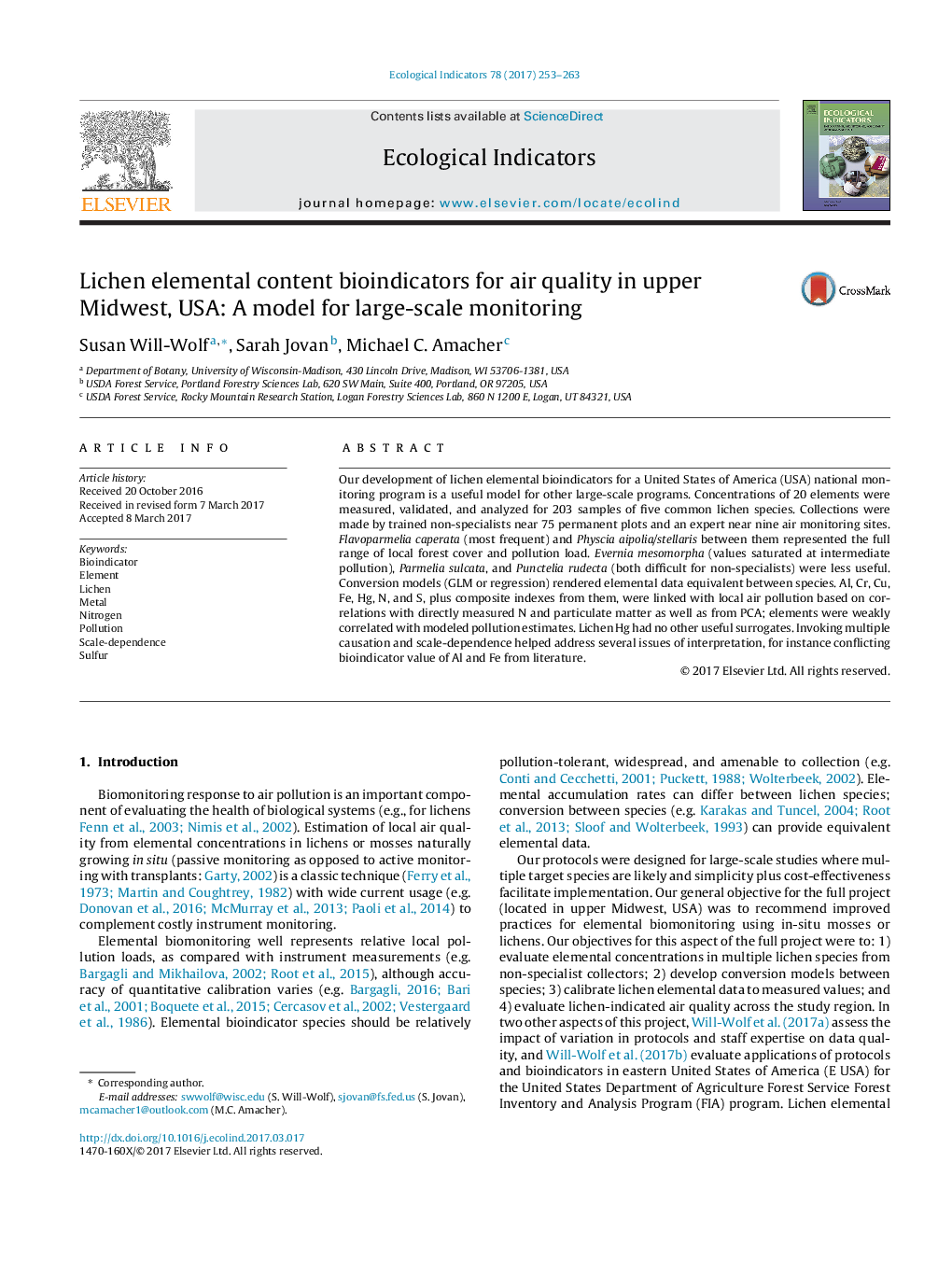| Article ID | Journal | Published Year | Pages | File Type |
|---|---|---|---|---|
| 5741633 | Ecological Indicators | 2017 | 11 Pages |
Abstract
Our development of lichen elemental bioindicators for a United States of America (USA) national monitoring program is a useful model for other large-scale programs. Concentrations of 20 elements were measured, validated, and analyzed for 203 samples of five common lichen species. Collections were made by trained non-specialists near 75 permanent plots and an expert near nine air monitoring sites. Flavoparmelia caperata (most frequent) and Physcia aipolia/stellaris between them represented the full range of local forest cover and pollution load. Evernia mesomorpha (values saturated at intermediate pollution), Parmelia sulcata, and Punctelia rudecta (both difficult for non-specialists) were less useful. Conversion models (GLM or regression) rendered elemental data equivalent between species. Al, Cr, Cu, Fe, Hg, N, and S, plus composite indexes from them, were linked with local air pollution based on correlations with directly measured N and particulate matter as well as from PCA; elements were weakly correlated with modeled pollution estimates. Lichen Hg had no other useful surrogates. Invoking multiple causation and scale-dependence helped address several issues of interpretation, for instance conflicting bioindicator value of Al and Fe from literature.
Related Topics
Life Sciences
Agricultural and Biological Sciences
Ecology, Evolution, Behavior and Systematics
Authors
Susan Will-Wolf, Sarah Jovan, Michael C. Amacher,
